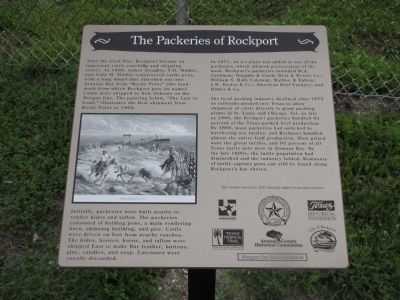In 1866, James Doughty, T.H. Mathis, and John M. Mathis constructed cattle pens, with a long wharf that extended out into Aransas Bay from “Rocky Point” (the landmark from which Rockport gets its name). Cattle were shipped to New Orleans on the Morgan line. The hides, hooves, horns, and tallow were shipped East to make fine leather, buttons, glue, candles, and soap. Carcasses were usually discarded. In 1871, an ice plant was added to one of the packeries, which allowed preservation of the meat. As late as 1880, the Rockport packeries handled 93 percent of the Texas-packed beef production. By 1890, most packeries had switched to butchering sea turtles, and Rockport handled almost the entire Gulf production. By the late 1890s, the turtle population had diminished and the industry folded. Remnants of turtle capture pens can still be found along Rockport’s bay shores.
The Packeries of Rockport
The Packeries of Rockport
- History Site
- April 11, 2016
- 6:58 pm









